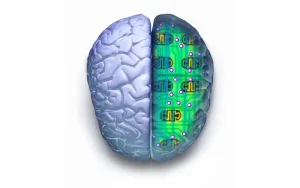Professor Alessio Fasano, a gastroenterologist based at Massachusetts General Hospital in the US, is personally acquainted with the difficulties encountered by families raising children with autism—a neurological disorder marked by social behavior challenges—having several relatives and friends in such circumstances.
Typically, autism symptoms manifest within the initial two years of a child’s life, and their likely origins involve a combination of genetic and environmental factors. Environmental risks come into play during the embryonic stage, potentially including exposure to infections or harmful substances like pollution and maternal diabetes during prenatal development.
Professor Alessio Fasano, recognizing the profound challenges faced by parents of children with autism, expressed, “Parents find themselves living in a parallel world to their child where communication is enormously difficult and there is nothing they can do about it.” Fasano is actively working towards providing assistance through his leadership in a six-year research project named GEMMA. The initiative, focusing on exploring the connections between autism and gut health, is scheduled to conclude at the end of 2024.
Autism, formally known as autism spectrum disorder or ASD, is estimated to impact at least one in 100 individuals globally. Advocacy group Autism Europe notes a significant and rapid increase in reported cases over the past three decades, particularly in countries conducting prevalence studies.
Professor Alessio Fasano acknowledges this global rise in incidence and suspects that broader diagnostic criteria may contribute to the reported escalation in cases. He suggests that addressing some behavioral traits associated with autism could involve restoring equilibrium to the diverse microorganisms within the human gut—the microbiome.
Fasano emphasizes the strong evidence supporting the connection between gut-brain communication and various neurological conditions, including autism. This prompts consideration of gut microbial-based treatments as a potentially safe therapeutic approach for the disorder.
Exploring the Gut Connection
Despite autism being initially described in the 1940s, its root causes remain unclear even after eight decades. What is established is the condition’s strong genetic foundation, involving potentially up to 100 different genes.
However, there is also a belief that inflammation of nerve cells in the brain contributes to autism. In this context, environmental factors, including gut health, are thought to be influential.
In a person in good health, the semi-permeable wall of the intestine serves as a protective barrier. It regulates the passage of essential ions, nutrients, and water into the body while controlling the movement of harmful substances both in and out of the gut.
When the integrity of this barrier is compromised, substances from the gut escape into the body, initiating an immune response. This response is believed to play a role in the development of inflammatory diseases and metabolic disorders, which, in turn, are thought to impact the brain.
This phenomenon is often referred to as “leaky gut.”
Professor Alessio Fasano notes, “What chronic inflammatory diseases share with autism is a combination of genetic predisposition and exposure to environmental triggers that result in inflammation.” He suggests that in the case of autism, compromised communication in the gut-brain axis allows substances into the brain, leading to neuroinflammation.
Tracking Infants
Within the GEMMA project, researchers are closely monitoring 500 infants ranging in age from zero to 36 months, all of whom are siblings of children diagnosed with autism.
The probability of a child being born with autism is believed to increase significantly when an older sibling is already on the autism spectrum.
Among various factors, the research team is specifically observing the microbial composition of the infants’ stools. Maintaining a balanced array of bacteria in the intestine is known to be crucial for preserving the integrity of the gut wall.
Individuals with autism commonly experience gastrointestinal disorders, ranging from stomach cramps to diarrhea. Additionally, the condition is frequently linked to an imbalance in gut microbes, characterized by lower microbial diversity and a higher ratio of harmful-to-healthy bacteria.
GEMMA’s objective is to restore equilibrium to the microbiome and repair the gut barrier by exploring treatments incorporating probiotics (healthy bacteria) and prebiotics (non-digestible fiber that stimulates the growth of beneficial bacteria).
Professor Alessio Fasano expresses optimism, stating, “This could be a novel approach to improve both the intestinal problems that are so common in children with autism and behavioral symptoms.”
Swift Identification
Currently, the earliest age at which autism can be diagnosed in children is 18 months, with the majority receiving diagnoses closer to the age of three.
Professor Alessio Fasano envisions a future where detection and intervention can take place before symptoms manifest, facilitated by a straightforward stool analysis.
“We aspire to achieve precision medicine,” he remarked.
Findings from the GEMMA project indicate that autism may impact as many as one in 36 children.
Fasano speculates that aspects of a Western lifestyle, including suboptimal diets, may play a role in this prevalence.
“The rapid changes in the environment we inhabit may have outpaced our bodies’ ability to adapt,” he added.
Other Ailments
Exploring the link between the gut and prevalent neurological disorders is also the focal point of research led by Jan Buitelaar, a professor of medical sciences at Radboud University in the Netherlands.
Buitelaar heads a project aimed at uncovering shared underlying characteristics among various seemingly distinct neurodevelopmental conditions. These encompass autism, attention-deficit hyperactivity disorder, intellectual disability, and epilepsy.
Named CANDY, this five-year project is set to conclude concurrently with GEMMA in December 2024.
Buitelaar highlights that it’s not coincidental for a child with autism to frequently also have attention-deficit disorder, or for an individual with intellectual disability to have a sibling with epilepsy.
“Often, multiple conditions co-occur, and, in addition, they are accompanied by other illnesses—most commonly epilepsy,” he stated.
Bacterial Profiling
In this initiative, samples of stool, urine, blood, and saliva are being gathered from three distinct groups: children aged three to six, older individuals, and the mothers of the young study participants.
Jan Buitelaar and his team are actively searching for shared genetic abnormalities among individuals with diverse neurodevelopmental conditions.
The team is also conducting a comprehensive analysis of the immune systems of study participants and collecting microbiome samples from both mice and humans. The primary goal is to investigate the connections between microbiome composition, neurodevelopmental disorders, and the diverse symptoms associated with them.
“Our objective is to explore the extent to which the microbiome may either mitigate or contribute to vulnerability in triggering an inflammatory response,” stated Buitelaar.
Additionally, the researchers are exploring whether specific types of bacteria are more prevalent in individuals with severe forms of autism and, if so, how this knowledge can be utilized for prevention and intervention.
Similar to GEMMA, an additional aim of CANDY is to enhance the speed of identifying neurodevelopmental conditions.
“The aspiration is that early detection of autism can pave the way for prevention or intervention,” expressed Buitelaar.
Read More : No significant link found between preterm delivery and autism










